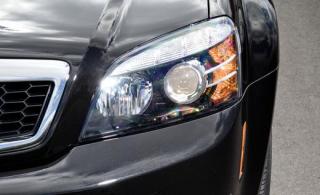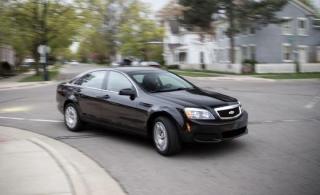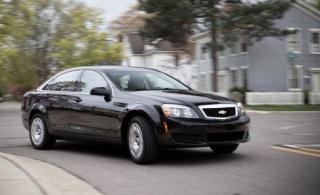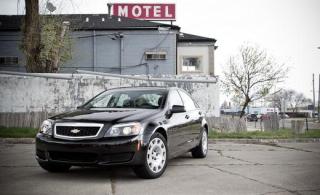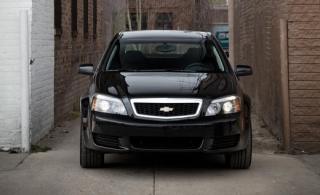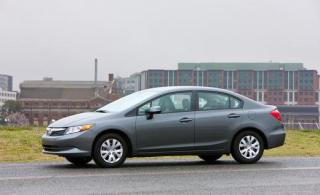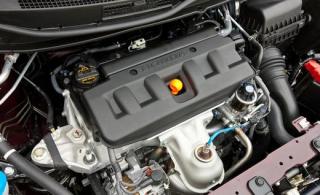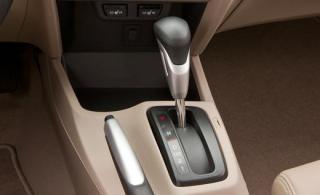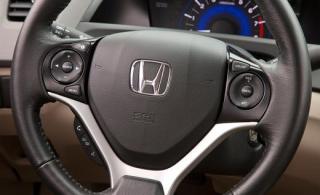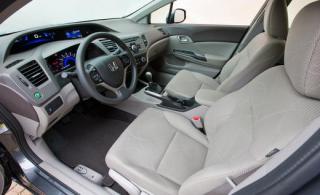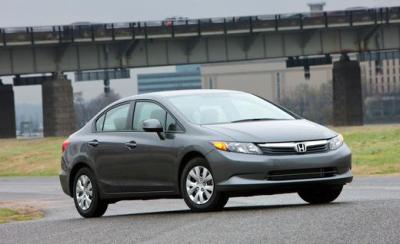A new V-8 makes for a better all-weather bruiser.
Mercedes-Benz, like many other carmakers, isembracing the turbocharger en masse in reaction to calls for greater fuel efficiency. Smaller, forced-induction mills are spreading throughout the three-pointed star’s lineup; the only naturally aspirated holdouts are the company’s gasoline V-6s and the mighty 6.2-liter V-8 found in select AMG models. Although such high-tech downsizing rarely comes without a cost—be it sticker shock, underwhelming performance, or overpromised fuel-economy ratings—this 2012 E550 4MATIC sedan seems to pay no penalty.
More of a Good Thing, Less Guilt
The all-wheel-drive E550’s base price of $60,665 is decidedly not cheap, but it’s a scant $190 higher than last year’s model’s, and you now get the company’s new 4.7-liter V-8 with twin turbos and direct injection. It’s good for 402 hp and 443 lb-ft of torque from just 1800 rpm—that’s 20 hp and 52 lb-ft more than last year’s nonboosted 5.5-liter eight-cylinder.
With the aid of now standard all-wheel drive, the additional power is enough to shave at least 0.5 second off a 2010 E550’s 0-to-60-mph and quarter-mile times, with the former now taking 4.3 seconds and the latter passing in 12.8 at 112 mph. Despite the power bump and extra mass of the all-wheel-drive gear (this E550 weighed in at 4411 pounds, 173 more than the last E550 we tested), fuel economy improves from an EPA-rated 15 mpg in the city and 23 on the highway to 16/26. Our heavy-footed average increased from 16 mpg to 18 mpg, too.
|
|
Slipping Away
One difference we could do without, however, was the fitment of 18-inch Pirelli P Zero Nero all-season tires (sized 245/40) on our test car in place of the Continental ContiProContact all-seasons that were on the last E550 4MATIC we evaluated.
With the new car’s added weight and the Pirellis reducing the chassis’s grasp on the road to a gentle hug, 70-mph panic stops stretch from 169 feet to 180, and lateral grip slips from 0.86 g to a meager 0.81. Although both tires are authorized original equipment, Mercedes admits that availability at the time of production largely determines which set is installed on a particular car. Unfortunately, there’s no way to determine which brand a particular car will have until it’s off-loaded at the dealership.
Composed and Comfortable
Because the car’s other technical tweaks are limited to a new electromechanical steering setup and an updated calibration for the seven-speed automatic transmission—it is still slow to react to manual inputs from the wheel-mounted paddles—the E550’s on-road behavior remains largely the same as before. The sedan is serene and composed, its hushed refinement offering a soothing retreat for commutes and filtering out the sensation of the impressive straight-line acceleration.
But consider one of Mercedes’ AMG models if you want hair-raising fun on back roads. The E550’s stability-control intrusions are aggressive, and although the steering feels more precise than before, it remains low effort and muted in feedback. Even with the standard Sport package and a special-order Airmatic suspension ($1860)—it offers nearly indiscernible sport and comfort modes, if you’re wondering—blasting down straights is always more enjoyable than aiming for apexes.
Lightening the Wallet
With the elimination of the rear-drive and Luxury-trim variants of the E550, this particular model is the only way to get a non-AMG, V-8–powered E-class sedan for 2012, representing a $2690 increase over last year’s eight-cylinder entry point. Although a dizzying array of comfort, convenience, and safety features is standard, our test car had the $6900 Premium 2 package, with navigation, an upgraded Harman/Kardon audio system with surround sound, satellite radio, iPod integration, heated and ventilated front seats, a rearview camera, bixenon headlights with automatic high beams, keyless access and go, and much more. Also included were a $2950 Driver Assistance package (active cruise control, blind-spot assist, and lane-keeping assist), the Airmatic suspension upgrade, a parking-guidance system ($970), a driver’s seat with active bolsters and massage ($660), a heated steering wheel ($490), split-folding rear seats ($440), and $720 worth of Steel Grey paint, for a grand total of $75,655.
|
|
Options notwithstanding, the E550’s base fee is about $4500 less than that of the all-wheel-drive and similarly powerful BMW 550i xDrive. (We’ve yet to test an xDrive variant, but the fleetest 550i Bimmer we’ve sampled trailed this E-class by a half-second to 60.) The Mercedes interior feels statelier, too, although it’s slightly less attractive.
The Mercedes’ minimal gains in efficiency alone won’t save the polar bears, but the E550’s updates let us be more, um, responsible citizens while savoring all the good stuff offered by a gutsy, twin-turbo V-8. We’d have felt even better if our car’s tires had offered up as much enjoyment.
taken from :
http://www.caranddriver.com



